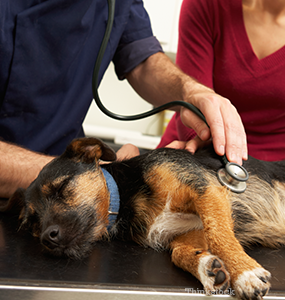
Dr. Phil Zeltzman is a traveling, board-certified surgeon in Allentown, PA. His website is www.DrPhilZeltzman.com. He is the co-author of “Walk a Hound, Lose a Pound” (www.WalkaHound.com).
Kelly Serfas, a Certified Veterinary Technician in Bethlehem, PA, contributed to this article.
In this blog I wrap up our review of anesthesia myths. I’ve already discussed seven common urban legends that veterinarians hear regularly from concerned pet owners (See Part 1 and Part 2). Now let’s investigate whether pets should be groggy after anesthesia, how often we can anesthetize a pet and whether anesthesia is just a formality.
8. My pet will be groggy for days after having anesthesia
This concern is more often false than true. Sure, every pet, like every human, handles anesthesia differently. Even if two patients are given the same anesthesia drugs and undergo the same procedure, one may recover very quickly and act like nothing ever happened while the other may recover slowly and still seem a little groggy for a day or two.
If your pet seems groggy a few days after a procedure, it is important to let your veterinarian know; your vet can look up records to see what drugs were used and adjust accordingly with alternate drugs or lower dosages.
A sleepy pet may be a sign of an underlying condition. However, in most cases, pets are not really groggy from the anesthesia; rather they’re groggy from their pain medications, which can sometimes cause sedation. Most modern anesthesia drugs are processed by the body within minutes to hours. Again, please double check with your veterinarian.
9. You can't anesthetize a pet often
Many pet owners think that their dog or cat cannot be placed under anesthesia repeatedly in a short span of time. While ideally your pets would not need frequent anesthesia, here are examples of times when they may:

- When pets get radiation therapy to treat cancer, their position has to be exactly the same to irradiate the tumor in the same manner every time. Since pets won’t hold still long enough, this means they have to be anesthetized for every session. The “standard” protocol is to put them under anesthesia 5 days a week for 4 weeks. That’s 20 anesthesia episodes within one month. And most do very well, even though many of these cancer patients are very sick already.
- A more common situation might be taking X-rays under sedation on a Monday, fixing a broken bone under anesthesia on a Tuesday and changing a bandage under sedation on a Wednesday. These days, there are many options for very safe drugs to perform sedation or anesthesia. These drugs leave the body quickly, so they have few harmful effects. Some drugs can even be “reversed,” which means that we can give sort of an antidote to wake the patient up.
10. There is no danger
While my intention with these blogs is to show you that anesthesia is safe most of the time, some pet owners seem to take it for granted. Whether a procedure is performed under sedation or anesthesia and despite a pre-surgical exam, blood work and sometimes further diagnostic tests, any pet could have a rare reaction to a medication.
This doesn’t mean that you should be overly paranoid. All it means is that anesthesia should be taken seriously, and that you should talk with your veterinarian before your pet is sedated.
If you have any questions or concerns, you should always visit or call your veterinarian -- they are your best resource to ensure the health and well-being of your pets.
